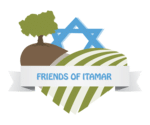Parashat Shoftim
Parshat Shoftim Elul 5768-2008 “When you shall besiege a city for a long time in making war against it to take it, you shall not destroy its trees by forcing an axe against t
Parashat Pinchas
Parshat Pinchas July 18, 2008 In the late 1800’s an officer in the British army and an avid researcher of biblical sites, by the name of Charles Wilson published an important
Parashat Balak
Parshat Balak July 11, 2008 King Balak forms a union with the neighboring nations in order to attack Am Yisrael. Much publicity has been given to the great and mighty nation that b
Parashat Shelach
Parshat Shelach June 20, 2008 “Send people to the Land of Canaan” The Land of Israel is the inheritance of our forefathers and was planned by Hashem for the Jewish peop
Parashat Bamidbar
Parshat Bamidbar June 6, 2008 The book of Bamidbar opens with Hashem commanding Moshe Rabeynu to count the nation. And G-D spoke to Moses in the desert of Sinai in the tabernacle o
Parashat Vayikrah (connected to parashat Pikudey)
Pekudey- Vayikra March 14, 2008 Dedicated to the Kdoshim meMercaz Harav The tabernacle was built and dismantled many times on the journey through the desert. Mainly, this is the th
Parashat Beshalach
Parashat Beshalach January 18, 2008 When reaching the pinnacle of the Exodus, the splitting of the Red Sea, we can’t help but ask how did Bnei Yisrael continue to complain af
Parashat Bo
Parashat Bo Thursday, January 10, 2008 In the tractate of Sanhedrin 111A our Rabbis criticize the behavior of Moshe Rabeynu and praise the actions of our forefathers. The Talmud ex
Parashat Vaerah
Parashat Vaerah January 3, 2008 Redemption from Egypt did not happen overnight as we know, but stage by stage. The curtain is raised as Bnei Yisrael, Moshe Rabbeinu, Pharoh and the
Parashat Vayigash
Parashat Vayigash December 14, 2007 Determining leadership for the Jewish people has never been an easy thing for any age in our long history. But when a leader’s time comes

